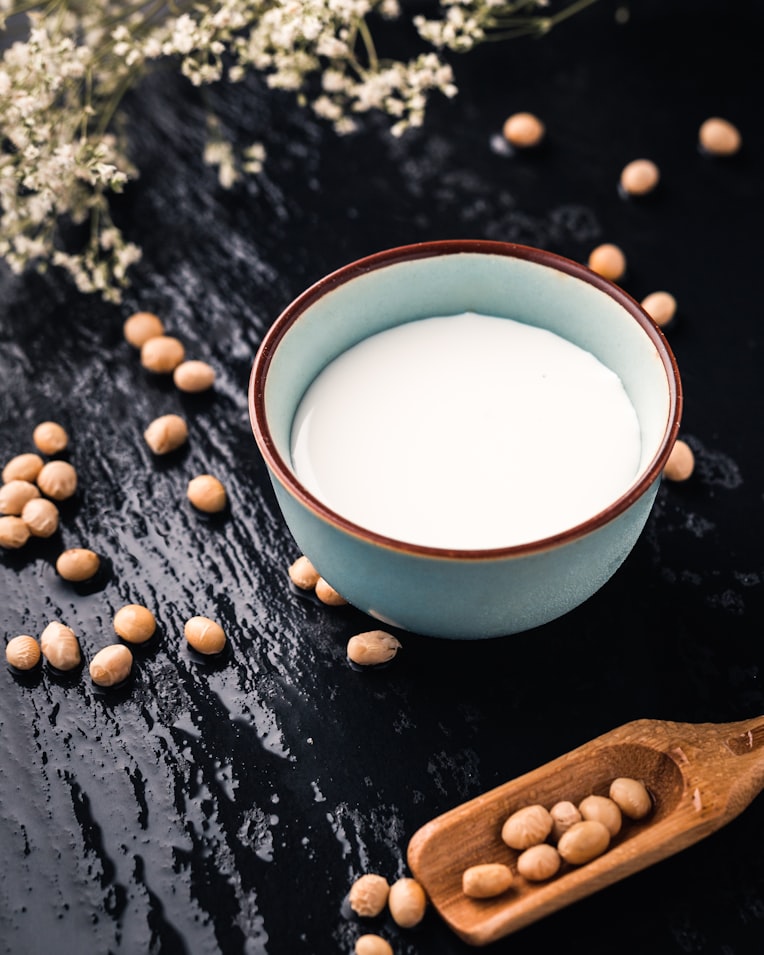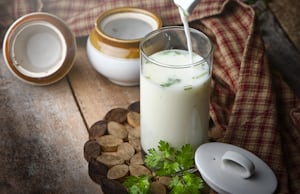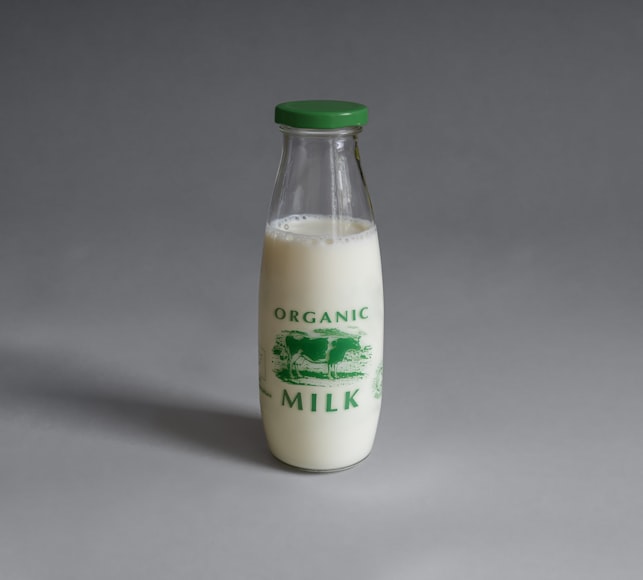As plant-based alternatives continue to surge in popularity, the debate between oat milk vs soy milk has become increasingly relevant for health-conscious consumers. Whether you’re lactose intolerant, vegan, or simply exploring dairy-free options, choosing the right plant-based milk can significantly impact both your nutrition and daily enjoyment. While soy milk has been a longtime staple in many cultures and was one of the first dairy alternatives to hit mainstream markets, oat milk has emerged as a formidable competitor, winning over coffee enthusiasts and health-focused individuals alike.

Table of Contents
Both of these dairy alternatives offer unique benefits and potential drawbacks, making the choice between them more than just a matter of taste. As we dive deeper into comparing these popular plant-based options, you’ll discover how each might fit into your lifestyle, dietary needs, and environmental values.
What Are Oat Milk and Soy Milk? A Quick Introduction
Soy milk, with its centuries-old heritage in Asian cuisine, is made by soaking and grinding soybeans, then filtering them to create a smooth, creamy liquid. This traditional process has been refined for commercial production, but the basic principle remains the same. Modern manufacturers often fortify their soy milk with calcium, vitamin D, and other nutrients to match the nutritional profile of cow’s milk.
On the other hand, oat milk is a more recent innovation that has quickly gained traction in the alternative milk market. It’s produced by blending whole oats with water and then straining the mixture to remove the oat pulp. Many brands add enzymes to break down the oats’ starches into smaller, more digestible components, resulting in a naturally sweet and creamy beverage.
Like soy milk, commercial oat milk is typically fortified with additional nutrients.What sets these two plant-based options apart is their base ingredients. While soy milk relies on protein-rich soybeans, oat milk harnesses the power of whole grain oats. This fundamental difference influences not only their nutritional content but also their texture, taste, and culinary applications. The production process of both milks is relatively straightforward, though commercial versions may include additional ingredients like stabilizers, emulsifiers, and sweeteners to improve texture and shelf life.

Nutritional Face-Off: Comparing Key Nutrients
When examining the nutritional profiles of oat milk and soy milk, some clear differences emerge in their core nutrients. Soy milk generally leads in protein content, providing approximately 7-8 grams per cup (240ml), which is comparable to cow’s milk. This high protein content makes it particularly valuable for vegetarians and vegans looking to meet their daily protein requirements.
Oat milk typically contains less protein, averaging 2-3 grams per cup, but it compensates with higher fiber content, offering about 2 grams of fiber per serving. This fiber content, specifically beta-glucans, has been linked to heart health and cholesterol management.
Here’s a basic nutritional comparison per cup (240ml) of unsweetened varieties:
Soy Milk:
- Calories: 80-90
- Protein: 7-8g
- Fat: 4g
- Carbohydrates: 3-4g
- Calcium: 300-400mg (when fortified)
Oat Milk:
- Calories: 90-120
- Protein: 2-3g
- Fat: 5g
- Carbohydrates: 16-19g
- Calcium: 350mg (when fortified)
It’s worth noting that these values can vary significantly between brands and whether you choose sweetened or unsweetened versions. Both types are typically fortified with similar levels of calcium, vitamin D, and vitamin B12, making them viable alternatives to dairy milk from a micronutrient perspective

Health Benefits: What Science Says About Both Options
Let’s examine the evidence-backed health benefits of both milk alternatives:
Soy Milk Benefits:
- Complete Protein Source: Soy milk provides all nine essential amino acids, making it unique among plant-based milks. Research published in the Journal of Nutrition shows that soy protein can support muscle maintenance and growth comparable to other high-quality proteins.
- Heart Health Support: The FDA has maintained that consuming 25 grams of soy protein daily, as part of a diet low in saturated fat, may reduce the risk of heart disease. Soy milk’s isoflavones (natural plant compounds) have been linked to improved heart health markers.
- Bone Health: Fortified soy milk provides similar calcium levels to dairy milk. Studies in the American Journal of Clinical Nutrition have shown that calcium from fortified soy milk is well absorbed by the body.
Oat Milk Benefits:
- Beta-Glucan Content: Oat milk contains beta-glucans, soluble fibers that have been extensively studied. Research published in the European Journal of Clinical Nutrition demonstrates that beta-glucans can help lower cholesterol levels when consumed regularly.
- Blood Sugar Management: The fiber in oat milk can help slow digestion and the absorption of carbohydrates, potentially leading to better blood sugar control. However, those watching their blood sugar should choose unsweetened varieties.
- Allergen-Friendly Option: Unlike soy milk, oat milk is generally safe for people with soy allergies. Most brands are also gluten-free, though people with celiac disease should look for certified gluten-free options.
Important Considerations:
- Soy milk may not be suitable for those with soy allergies or certain hormone-sensitive conditions (though research on soy’s hormonal effects remains mixed).
- Oat milk’s higher carbohydrate content may not be ideal for those following low-carb diets.
- The nutritional benefits of both options depend largely on whether they’re fortified and what additional ingredients are added during processing.

Environmental Impact and Sustainability
When comparing the environmental footprint of oat milk and soy milk, several key factors come into play:
Water Usage:
- Soy Milk: Requires approximately 28 gallons of water to produce one glass.
- Oat Milk: Uses roughly 13 gallons of water per glass.
- Both options use significantly less water than dairy milk, which needs about 120 gallons per glass
Land Use:
- Soy Milk: Requires less land than dairy milk, but soybean cultivation has been linked to deforestation concerns in some regions.
- Oat Milk: Generally requires less land than soy and can be grown in various climates- Oats are often grown as rotation crops, which can help improve soil health
Carbon Emissions:
- Both alternatives produce significantly lower greenhouse gas emissions compared to dairy milk.
- Oat milk typically generates about 0.9 kg CO2 per liter.
- Soy milk produces approximately 1 kg CO2 per liter- These figures can vary based on production methods and transportation distances
Additional Environmental Considerations:
- Packaging Impact: Both milks are commonly sold in similar packaging (Tetra Pak or plastic containers)- Some brands now offer recyclable or plant-based packaging options.
- Regional Factors: Local production can significantly reduce transportation emissions- Oats can grow in more diverse climates, potentially allowing for more local production.
- Agricultural Practices: Organic vs. conventional farming methods affect overall environmental impact- Oats are generally considered a low-impact crop that requires fewer pesticides- Soy farming practices vary widely by region and production method.

Making the Right Choice: Taste, Usage, and Special Considerations
When deciding between oat milk vs soy milk, several practical factors can help you make the best choice for your lifestyle:
Taste and Texture:
- Soy milk has a slightly nutty, beany flavor with a creamy texture.
- Oat milk offers a naturally sweeter, cereal-like taste with a smooth, creamy consistency- In the oat milk vs soy milk debate, many baristas prefer oat milk for coffee drinks due to its superior frothing ability
Culinary Applications:
Soy Milk:
- Excellent for baking due to its protein content.
- Works well in savory dishes and sauces.
- Holds up well under high heat.
- Less likely to separate in coffee compared to other alternatives
Oat Milk:
- Superior creamer alternative for coffee and tea.
- Great for smoothies and breakfast cereals.
- Works well in baked goods, though may add sweetness.
- Makes excellent homemade ice cream.

Cost Considerations:
In the oat milk vs soy milk price comparison:
- Soy milk is often the more economical choice.
- Oat milk typically commands a premium price, especially barista versions.
- Both are more expensive than conventional dairy milk
Special Dietary Considerations:
When choosing between oat milk vs soy milk, consider these health factors
- Allergies: Choose oat milk if you have soy allergies, or soy milk if you’re sensitive to gluten.
- Low-carb diets: Soy milk is the better choice due to lower carbohydrate content.
- Protein needs: Soy milk offers superior protein content.
- Blood sugar management: Unsweetened soy milk may be preferable.
Storage and Shelf Life:
- Both options typically last 7-10 days once opened.
- Unopened containers of both oat milk vs soy milk can last several months.
- Both require refrigeration after opening- Shelf-stable versions are available for both types
The winner in the oat milk vs soy milk comparison ultimately depends on your personal needs. Consider your dietary requirements, taste preferences, environmental concerns, and intended use when making your choice.
Follow On:

